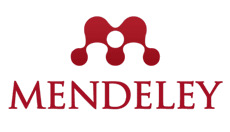Author Guidelines
MANUSCRIPT WRITING INSTRUCTIONS
TYPE OF WRITING
The manuscript is the result of original research (own work), has never been published before and is free from plagiarism. Manuscripts that have been submitted become the property of the editor and may not be published again in any form.
GENERAL PROVISIONS OF WRITING
a. A4 paper size (210 mm x 297 mm)
b. The manuscript is typed with upper and lower margins of 3 cm, left side of 3.5 cm and right side of 2.5 cm, 1 column page; typeface Garamond font 12 with 1.5 spaces, without indents and using spaces between paragraphs, maximum manuscript length of 15 pages.
c. Page numbers are written at the bottom center
d. Figures and tables are not grouped separately, but are integrated into the manuscript, numbered, titled, and sourced. Tables are typed one space apart, without using vertical lines (column lines). The maximum number of tables and figures is five.
e. Sub topics are not numbered, bolded, Titel Case, 1 space
MANUSCRIPT STRUCTURE
TITLE
The title of the publication is different from the research title, must be brief and reflect the content of the writing, using bold capital letters, font 14; with a distance of 1.5 spaces. The distance between the title and the author's name is 1.5 spaces.
AUTHOR'S NAME
The full names of the authors are listed without academic titles, without abbreviating, with the following provisions
Author Name 1, Author Name 2, Author Name 3
(Bold, 12pt, 1 space, without title, without abbreviation)
1 Department/Study Program, Faculty, College/Institution of Origin -Address → (10 pts)
2 Department/Study Program, Faculty, College/Institution of Origin -Address → (10 pts)
ABSTRACT and ABSTRACT
Abstract is written in Indonesian and English. It consists of one paragraph, and describes the entire content of the manuscript consisting of introduction, methods, results, and conclusions. Written using 11 pt Garamond font, 1 space. Keywords are listed below the abstract, three to five words, sorted alphabetically. The number of words does not exceed 150-200 words, no quotations and abbreviations/acronyms).
INTRODUCTION
The introduction is written concisely, contains justification for the importance of the research, the novelty of the research, generally consists of background problems, problems, and research objectives.
RESEARCH METHODS
Inform briefly about the materials and methods used in the research, including the subjects/materials studied, tools used, design used, sampling techniques, variables to be measured, data collection techniques, analysis and statistical models used and data collection ethics.
RESULTS
Research results can be presented with tables, graphs or images as needed to clarify the verbal presentation of results. Figures and tables are not grouped separately, but are integrated with the manuscript, numbered, titled, and sourced. Tables are typed one space, without using vertical lines (column lines). The total number of tables and figures is a maximum of (5) five.
DISCUSSION
The discussion is directed at answering the research hypothesis by emphasizing the similarities, differences, or uniqueness of the results obtained by the researcher. The description of the discussion of why the research results are like that and ends by providing recommendations for further research.
CONCLUSION
The conclusion is the answer to the hypothesis that leads to the research objectives. Researchers need to reveal the implications of the research results. Suggestions for further research can be written in this section. This section is 2-3 paragraphs only
ACKNOWLEDGMENTS
Acknowledgments are given to the source of research funding (funding agency, contract number, year of receipt) and the person who supported the funding. The name of the person who supported or helped the research is clearly written.
REFERENCES
References contain a minimum of 15 references, 80% of which come from journals, and the rest from other sources, references are selected that are most relevant to the manuscript. References are written following the “name-year” style (APA style): last name, first name. (year of publication). title (italicized). City of publication: Publisher
Book source:
Dharma, K.K. (2011). Nursing research methodology: a guide to conducting and applying research results. Jakarta: Trans Info Media
Journal Source
Hilsen, et al. (2011). Changes in fruit and vegetable intake of 10-12 year old children in Norway from 2001 to 2008 in relation to gender and socioeconomic status - a comparison of two cross sectional cohorts. International Journal of Behavioral Nutrition and Physical Activity 8:108
Online Article Source
Supriadi, T. (2009). Hospitals in North Sumatra have not provided disease data. Waspada Online. Obtained from http://www.was




